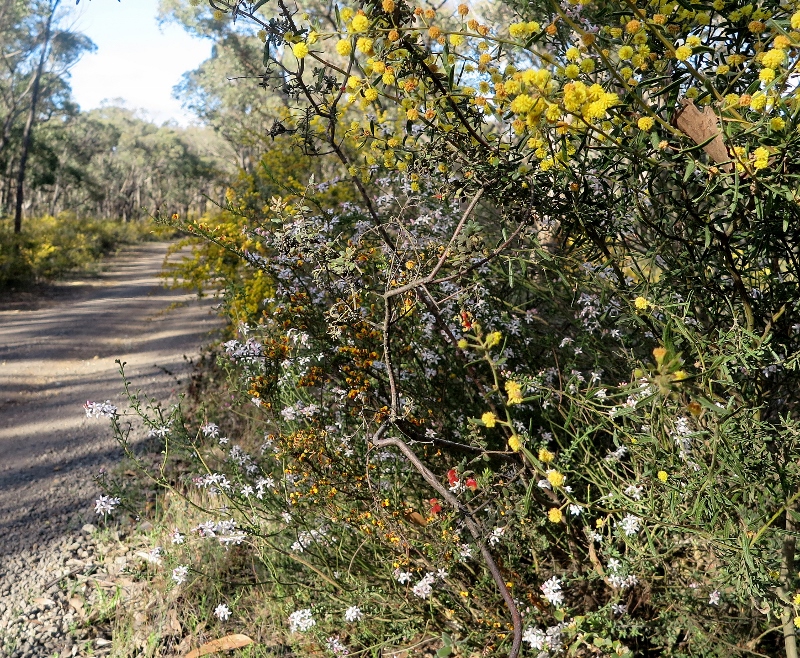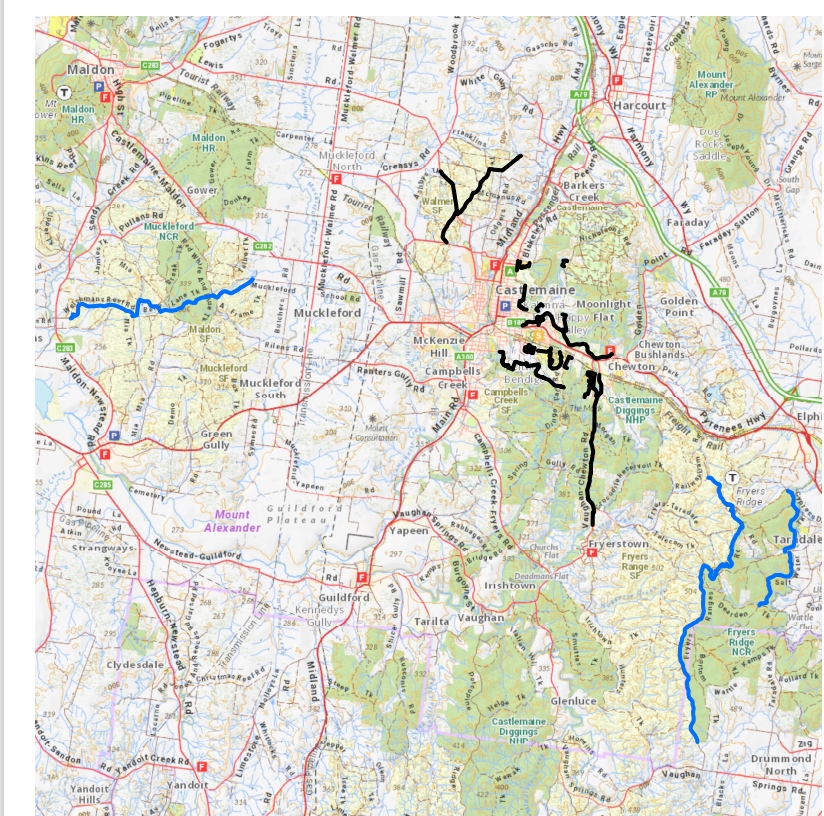The draft map below shows the strategic fuel breaks proposed for the Castlemaine region. The lines are provisional but we are assuming they’ll be close to final.
The black lines are the breaks around the Castlemaine-Chewton area, plus the important Chewton-Fryerstown road. They are to be implemented this financial year.
The blue lines are for works planned for 2022-3. They include an east west break through the Muckleford Forest, along Bells Lane Track; and Fryers Ridge Road and Salt Water Track in the Fryers Forest.
As we’ve previously reported, FOBIF is generally supportive of appropriate fire protection works around settlements, or directly concerned with settlement safety. Our main worry with this project relates to the forest breaks: in our view, mowing high value roadsides permanently down to 10 centimetres and mulching the result would be an amenity catastrophe and a serious biodiversity setback. The fuel breaks project includes provision for research by the Arthur Rylah Institute on the ecological effects of mulching, but in our view such research would have a lot in common with an autopsy.

Fryers Ridge Road, September 2021: Under current proposals this would be mown down to 10 centimetres, mulched, and kept permanently in that state.
FOBIF has asked the fuel breaks project leaders to consider whether the desired safety outcome could be achieved by extra tree thinning and judicious understorey management along roadsides. A justification for this approach can be found in Melbourne University research. The authors of the research conclude:
‘Thinning to reduce fire risk is intended to slow the rate fire spreads, lower flame heights and improve recovery after wildfire hits. This was shown in a 2016 extensive review of US research, which found thinning and prescribed burning helped reduce fire severity, tree mortality and crown scorch. A 2018 study on Spanish pine forests had similar results.
‘Our own research on Australian forests also supported these findings. We found mechanical thinning plus burning in silver top ash reduces fire fuel hazard, with major reductions in dead trees, stumps and understory.
‘We compared thinned and unthinned alpine ash forests using computer modelling, simulating severe to extreme weather conditions. And we found modelled fire intensity decreased by 30% and the rate of fire spread and spot fires moving ahead of the main fire decreased by 20% with thinning.’
Thinning, properly implemented, can also have ecological benefits.
FOBIF is not wedded to this or any other specific approach to fire safety: what we are urging is that fire managers investigate approaches which might have safety and ecological benefits. We are as concerned about safety as anyone: but we are opposed to any approach which assumes that human safety is incompatible with ecological health.





 Click on image for info/order page
Click on image for info/order page Click on image for info/order page
Click on image for info/order page Click on image for info/order page
Click on image for info/order page




















